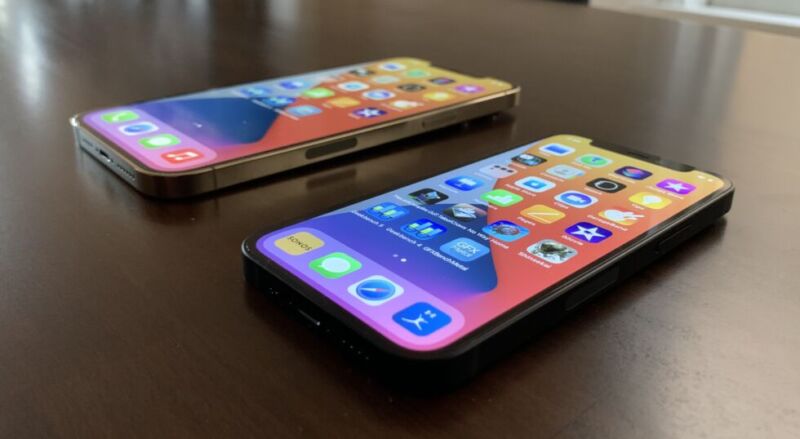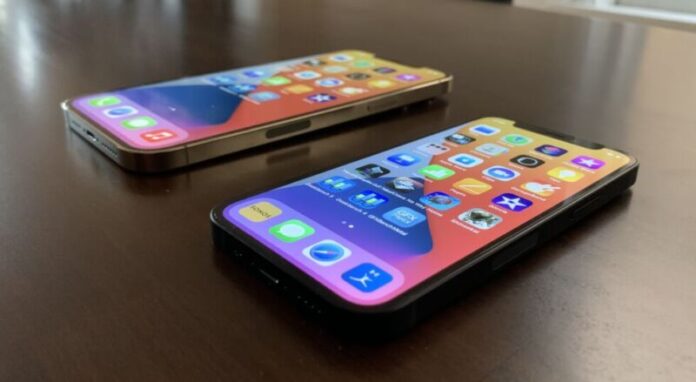
Enlarge / The iPhone 12, a phone that Apple no longer actively sells, is under investigation in France for potentially violating one of two electromagnetic radiation standards. (credit: Samuel Axon)
For many people, the iPhone 12 effectively disappeared from the market on Tuesday, when Apple introduced iPhone 15 models and stopped selling the 12, first released in October 2020. In Europe, however, the iPhone 12 remains a notable device, as a number of countries are following France's lead in looking into the device's electromagnetic profile.
What kicked off the unexpected concern about a nearly 3-year-old phone was France's National Frequency Agency (ANFR). On the same day as Apple's fall product announcements, the ANFR informed Apple that the iPhone 12 exceeds European Union regulations for Specific Absorption Rate (SAR), the rate at which a human body would absorb radiation from a device. A translated version of the ANFR report has the agency calling on Apple to withdraw the iPhone 12, "quickly remedy this malfunction," and if not, "recall copies already sold."
There are two measures of SAR for a device operating in the same frequency range as an iPhone, per EU standards. The "head and trunk" value, taken to protect against "acute exposure effects on central nervous tissues" when a phone is against the head or in a pants pocket, must not exceed 2 Watts of power per kilogram of body tissue, averaged over six minutes. When the phone is held in the hand or in clothing or accessories, for a "limbs" value, it's 4 W/kg.
Read 7 remaining paragraphs | Comments
Ars Technica - All contentContinue reading/original-link]




